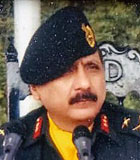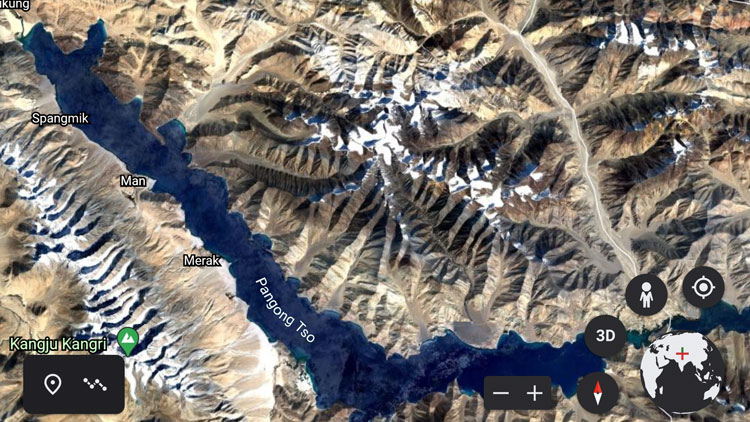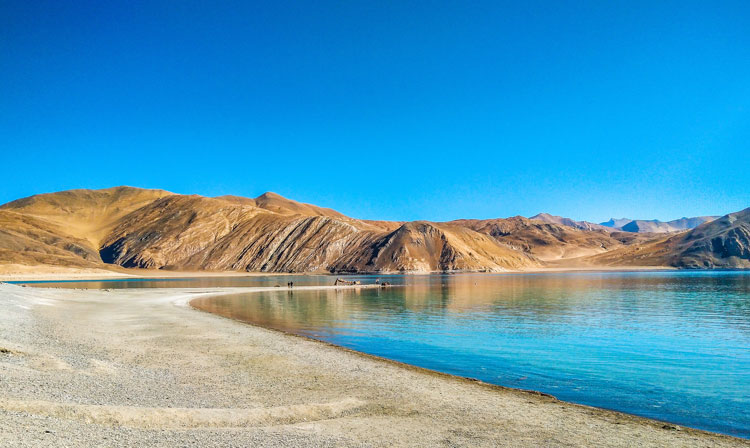INDIAN ARMED FORCES CHIEFS ON OUR RELENTLESS AND FOCUSED PUBLISHING EFFORTS

The insightful articles, inspiring narrations and analytical perspectives presented by the Editorial Team, establish an alluring connect with the reader. My compliments and best wishes to SP Guide Publications.

"Over the past 60 years, the growth of SP Guide Publications has mirrored the rising stature of Indian Navy. Its well-researched and informative magazines on Defence and Aerospace sector have served to shape an educated opinion of our military personnel, policy makers and the public alike. I wish SP's Publication team continued success, fair winds and following seas in all future endeavour!"

Since, its inception in 1964, SP Guide Publications has consistently demonstrated commitment to high-quality journalism in the aerospace and defence sectors, earning a well-deserved reputation as Asia's largest media house in this domain. I wish SP Guide Publications continued success in its pursuit of excellence.
- MoD initiates comprehensive review of Defence Acquisition Procedure 2020, pushes for defence reforms
- G7: The Swansong
- Kalinga Connect: South Asia to Polynesia
- Must Credit DRDO for Operation Sindoor, now what is next for defence R&D?
- The layered Air Defence systems that worked superbly, the key element of Operation Sindoor
- Operation Sindoor | Day 2 DGMOs Briefing
- Operation Sindoor: Resolute yet Restrained
The Inevitable Clash
Don’t try to please a bully, it will only make him bolder! The Chinese Dragon continues to dance along the LAC turning belligerent militarily and trying to slice off parts of Indian territory with its “Salami Slicing” tactics. India needs to gain insight into the adversary’s mind to counter it and evolve sound pre-emptive policies.
 |
The Author is Former Director General, Mechanised Forces, Indian Army |

‘In the last 2,200 years, China and India spent 99.9 percent of the time enjoying friendly relations, only 0.1 percent of the time relations were not good’ – Chinese Prime Minister Wen Jiabao in 2003
Left unsaid in the above statement is the fact that these two civilization-cum-empire states were distant neighbours for much of their history with Bhutan, Nepal, and Tibet being the buffer states. The relations turned bitter soon after the change of the traditional Indo-Tibetan border into Indo- China disputed border with disputed histories. Till this syndrome of Middle Kingdom is changed, clash is inevitable!
BACKGROUND
Since independence Indian leaders have had a pacifist attitude towards China. Prime Minister Nehru advocated a policy of accommodating each other’s interests in such a way to coexist peacefully. However, he received a rude shock with China’s allegedly unprovoked attack in 1962. Similarly, Prime Minister Modi did his best to cultivate friendship with President Xi Jinping but Xi too stayed true to a dictator’s character – untrustworthy. The present incursions in Ladakh Region by China have locked both the nations in a complicated situation. The relationship has become tangled in a web of trade (economics), technology, and border issues. The mutual distrust has increased which is unlikely to be bridged anytime soon.
Chinese are students of Sun Tzu and nothing comes to their geopolitical strategic thinking more naturally than ‘feint and deception’ and making the opponent surrender without a fight
India has laid claims to colonial boundaries but with no means to enforce it. We have been slave to soft power, good will and diplomacy. The real world is different; you need hard power to back the soft power and diplomacy. However, the Indian leadership instead of resolving have let the problem linger on. Our policy of toeing China’s line on Tibet, Taiwan and side-lining Dalai Lama has not helped either. Doklam should have raised our hackles but the policy planners chose to ignore. Similarly, all the strategic signals of build-up of troops by China at the LAC were misread and warnings went unheeded.
It is a well-known fact that Chinese are students of Sun Tzu and nothing comes to their geopolitical strategic thinking more naturally than ‘feint and deception’ and making the opponent surrender without a fight. Chinese will never enter a war without a clear political aim and unless the achievement of that political aim is a certainty, they will not risk “losing face”. Is it a thought through action by China or a gamble? Were they convinced about the Indian response - rhetoric and it will be a new normal?

CHINA’S CHAKRAVYUHA
China has significant superiority of numbers in war-fighting capabilities and coercive diplomatic resources relative to India. The Chinese Communist party, which won the civil war by dominating rural China in order to encircle its cities, is now intent on encircling India, strategically and economically. It is cultivating our neighbours - Pakistan our arch rival, Bangladesh is slowly slipping out, Nepal is already in their grips with Prime Minister Oli dancing to their tunes, Myanmar is dependent on China. In Sri Lanka, the return of the Rajapaksas’ to power does not augur too well; Iran has got into a strategic relation with China and we have lost Chabahar. We are left with Bhutan who is slowly being threatened by new claims to fall on their side.
India needs to use the present situation where the world has become suspicious of China’s agenda and is being shunned by various nations
For India to break out of the Chinese ‘chakravyuha’ (encirclement), it needs to strengthen its “hedging” strategy and build strong strategic relations with major stake holders in Asia- Pacific region, who are also wary of China’s intransigence attitude. India needs to use the present situation where the world has become suspicious of China’s agenda and is being shunned by various nations - the Covid cover-up, belligerence in South China Sea, subverting the Hong Kong treaties, and the suppression of the Uighurs. India should take initiative to build strong alliances with like-minded nations to thwart CCP’s design. Along with these nations, India needs to launch a campaign to bring out the true agenda of Chinese Communist party (CCP), to the world at large and the Chinese population. China must be hit where it hurts them most. The trade war by Trump administration is already hurting China. India needs to make a list of retributive actions, that hurts the Chinese and restricts the damage to India; a start has been made by putting in motion some economic measures.
FACING CHINA
India needs to seriously build its military capability and get out of this quagmire of emergency purchases. A powerful nation cannot be dependent on other countries for its defence requirements. Indian government needs to take harsh and concrete steps to make the government owned defence research and manufacturing entities accountable. The political leadership of all hues must come together; the military and civilian bureaucracy must work in unison to realise our potential or we will remain a soft state ready to be nibbled at. The stakes will have to be raised for China to return to status quo or else the present ground position may become the new status quo. But is India ready to accept what Chinese perceive - a new status quo and a new normal?
A powerful nation cannot be dependent on other countries for its defence requirements. Indian government needs to take harsh and concrete steps to make the government owned defence research and manufacturing entities accountable.
The experts argue that the asymmetry between China & India precludes any military conflict. Probably it is such a thought process that has led China to move up to their perceived claim line. Unfortunately, no one knows what is their actual claim line for it keeps changing with time. If India gets bullied and accepts it as the new status quo, it will become a never-ending story till China nibbles not only more Indian territory but also of Bhutan, Nepal, and other Asian Pacific nations.
How do both nations get out of this log jam without losing face? The winter is long and harsh! As is evident, both sides are preparing to remain deployed. If the tense situation carries on and China refuses to withdraw, will it lead to hostilities? Have the Chinese miscalculated the Indian response?
Without hard power, negotiations and diplomacy fails; developing hard power takes time and to offset this India needs to build strong alliances. We need to build capacities to change the perception of India being a soft state. India needs to show its firm resolve and willingness to bear the cost. Crisis gives rise to change and impossible becomes possible. War is politics by other means and weapon of last resort. To stop a bully, the clash of wills cannot be avoided; India needs to be prepared for the inevitable; the threat is clear and present!
Stop Press
On the night of August 29th/30th, against all agreed agreements, China again tried to change the status quo on ground near the southern bank of Pangong Tso area. The alert Indian Armed Forces thwarted the attempt. China is trying to obfuscate the whole episode and continues to build troops along the LAC. The bully is not changing its colours. Indian Nation needs to be prepared for the inevitable.





